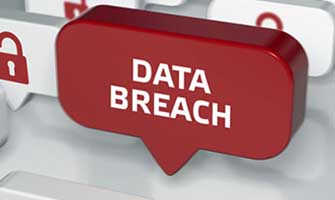 Expensive Data breaches are the new normal. Unauthorized hacks compromise millions of records yearly, and associated costs are devouring profits. So how can you, a business owner, alleviate breach costs? Let’s take a look.
Expensive Data breaches are the new normal. Unauthorized hacks compromise millions of records yearly, and associated costs are devouring profits. So how can you, a business owner, alleviate breach costs? Let’s take a look.
Data Breach Statistics and Definition
The Department of Homeland Security defines “data breach” as:
“The unauthorized movement or disclosure of sensitive information to a party, usually outside the organization, that is not authorized to have or see the information.”
In layman’s terms, a digital data breach occurs when unauthorized parties crack into accounts, devices, networks, or servers. And in today’s wired world, everyone should be worried about getting hit — both private citizens and security professionals.
Who Needs to Worry Most About Digital Data Breaches
What firms and businesses are the most vulnerable? Currently, the field is wide open. Anyone who collects and stores personal information should be on alert — especially banks, hotel chains, law firms, financial institutions, healthcare companies, and governments.
The Direct and Indirect Costs of Data Breaches
How much does the average data breach cost a company? The Ponemon Institute reports that US-based businesses are hit hardest, and the associated profit losses keep climbing. In 2006, the average data breach cost $3.54 million. By 2019, that figure had jumped to $8.19 million.
For our discussion, we’ve divided data breach costs into two categories: direct and indirect costs.
Digital Data Breach Costs: Direct Costs
The straightforward costs spawned by data breaches include:
- Increased contractor and payroll hours for IT professionals to detect and patch the exploit.
- Compliance and public relations costs associated with local, state, and federal data breach notification laws.
- Decrease in sales revenue that inevitably follows public hacking incidents.
- A drop in share price post-breach.
- Associated litigation and call-center costs.
- Increased insurance costs.
Digital Data Breach Costs: Indirect Costs
We’ve discussed the direct costs associated with data breaches, now let’s look at indirect ones. These items may not come with invoices attached, but indirectly, they cripple operations and, by extension, profits. Examples of indirect data breach costs include:
- Loss of consumer trust;
- Lost business opportunities;
- Loss of stock reputation and therefore market share;
- Loss of talent.
Minimizing The Chances of an Expensive Data Breach
Now, let’s talk prevention. How can your small business minimize the chance of being hit with a profit-sucking hack?
In a phrase: Invest in DevSecOps. A tech industry buzzword, “DevSecOps” stands for “development, security, and operations.” More than just a call to mind the latest security protocols and encryption standards, “devsecops” is also about educating employees on best practices. It’s about denying access to portable storage on all company devices and making sure staffers know not to open certain attachments, even if it appears to come from a credible source?
The Ponemon Institute estimated that companies using cutting-edge “devsecop” models and approaches save up to $10.55 per record in the wake of an attack, which can translate into hundreds of thousands of dollars, if not millions.
Consult with a Digital Breach Lawyer
With more people telecommuting, digital security is now of paramount importance. If you’ve got legal questions regarding security breach laws or need confidential advice from someone with decade’s worth of legal and business experience in the niche, get in touch today.







